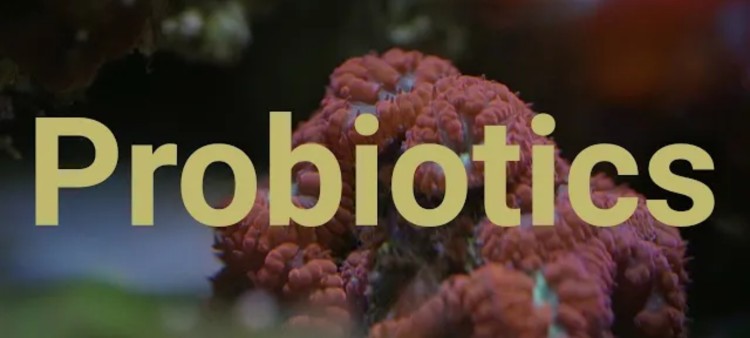Finding Probiotics for Coral Reefs
- Dec 05, 2021
- Anshika Mishra
- 178 0 0

The more coral we have, the more likely we will unwillingly introduce a disease. Large-scale coral facilities like online coral stores are particularly a risk. Probiotics can help with that, and we need to figure out exactly which types are best for your hobbyist corals.
You could be the person who figures it out!
What are Probiotics?
Corals have a lot of associated bacteria. We think of coral as a large community of sorts called a coral holobiont. We think of coral as really mixed of coral, fungi, viruses, archaea, algae, and more. Of all those, the thing you hear the most about is Symbiodiniaceae, the dinoflagellates that live amongst the coral's tissues adn provide nutrients they get via photosynthesis.
This nutrient source is the reason our coral needs such strong lights. Without reef tank lighting, the symbiotic dinoflagellates can't do their things. Little critters like bacteria and algae actually live throughout our corals. There are a few distinct populations that most corals have. Distinct groups are found in the mucus layer, deeper in the coral tissues, and still, others live their lives entirely within the coral's skeleton.
Knowing what sorts of bacteria live here, adn what they do, is cutting edge of science. And the key to being tablet o design a probiotic mixture that will help corals survive climate change or grow faster in our reef tanks.
Nutrition Absorber
That's not all the Probiotics can do, though. Probiotics can help with absorbing nutrition, they can make corals more resilient against stress, and some types can even mitigate diseases. In addition, various bacterial strains can help corals with increased bleaching resistance, reduce the impact of conditions, enhance energy reserves, and even increase corals' calcification rate.
Some of these effects might, in fact, be due to the coral-eating the probiotic bacteria when they are added. In target feeding their corals, many are even using this idea to try to target slow-release Probiotics to corals. Not all bacteria are good, though.
So, how can we test potential Probiotics strains of bacteria to find the good ones?
Testing Potential Probiotics Strains
Well, corals have very unique combinations of bacteria growing within them. Luckily, there tend to be species-specific rather than a unique fingerprint to an individual coral colony. This means that the very first step you can take is just knowing what you have got.
An Acropora Millepora may not respond to the same Probiotics as an Acropora Hyacinthus does, comply because it is colonized and uses different bacteria in the wild. So, you can find this information in their papers for some well-studied species.
The easiest place to get bacteria from on a coral is its mucus. You can swab it or even hold the coral out of the water and collect the mucus as it drips. There are distinct microhabitats in a coral, though, so it'd be important to sample some of the tissue and skeleton and not focus solely on mucus.
However, getting the general bacteria from the coral is only the first step. From here, you need to grow the bacteria. Then, you can use special Agar plates that feed certain kinds of bacteria to select some Probiotics candidates. This is an active field of research, and many options are popping up for working with corals holo bits in this way.
For instance, some plates target bacteria that can fix nitrogen from the environment. Or bacteria that stimulate immune responses can be used to select for traits that you want to find in a potential Probiotic strain.
Once you have grown some bacteria, you'd be well advised to screen it for known pathogens before using it on your corals. There are databases available to screen genomes to identify some of the more common problematic bacteria.
You may also find that one of the growing bacteria produces antibiotics. It is great for the coral but not so great for the other probiotic strains you might want to use alongside.
Getting Bacteria to Your Coral
so, once you have made sure that you are not going to put something harmful in your tank. The next stage is actually getting your bacteria to your coral. If you are just targeting the coral's mucus, you might be able to broadcast the cultures into the tank's water. That is easy, and if it works, that's ideal.
This works well in aquaculture and reef tanks. But it is hard to do in the wild on a coral reef. So, there is a lot of research going into the best ways to get a Probiotics mixture to coral.
Another option is to enrich the coral's food with bacteria. You can gut-load rotifers, and several corals will gladly eat life rotifers. An artificial shelf-stable food that can be supplemented with Probiotics would be ideal, but such a thing doesn't exist yet.
It is much harder to get Probiotics into the deep tissues or the skeleton of a coral. It might be possible to do this in an aquaculture farm or frag tank, though, as very young corals make be likely to take up some of these sorts of bacteria as they grow.






About author